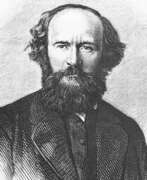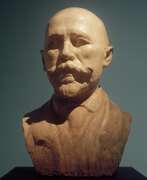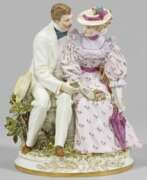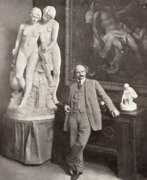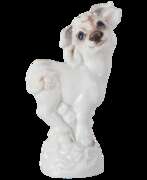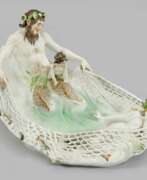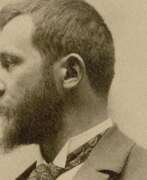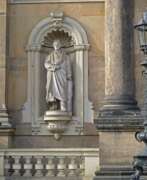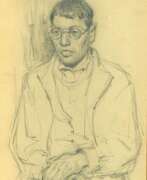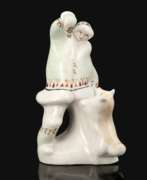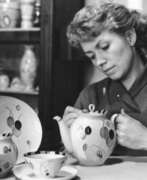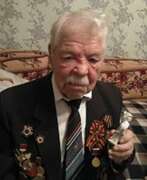Porcelain modelers 20th century


Natalya Yakovlevna Danko (Russian: Наталья Яковлевна Данько) was a distinguished Russian sculptor and medallist, celebrated for her profound contributions to the world of porcelain art. Born in 1892 and passing in 1942, Danko's journey in art commenced with rigorous training in Moscow at the Stroganov School and the City Art School, eventually leading her to significant roles in the Imperial Porcelain Factory. By 1914, she was working under the guidance of Vasiliy Lebedev, and by 1919, Danko had risen to the head of the sculpture workshop, a position she held until 1941.
Danko's oeuvre is characterized by its revolutionary spirit and exquisite craftsmanship, particularly noted in pieces like the "Red Army Soldier" (1919) and her iconic "Revolutionary chess set" (1922), which have earned her international acclaim. Her innovative designs not only reflected the political changes of her time but also showcased her mastery over porcelain, bringing a new dimension to Soviet art. Her works were showcased globally, from Paris to Monza, cementing her legacy in the international art scene.
Among her most celebrated works are the "The Reds and the Whites chess set" (1922-1932) and "Woman and Child with Fish" (1922-1923), both masterpieces of glazed and hard-paste porcelain, respectively. These pieces, housed in prestigious institutions like the Cooper Hewitt, Smithsonian Design Museum, and the Clark Art Institute, exemplify Danko's skill in blending artistic expression with social commentary, making her an important figure in both Russian and global art history.
For collectors and art and antiques experts, Danko's legacy represents a fascinating intersection of artistic innovation and historical narrative. Her works not only adorn museums but also continue to influence contemporary porcelain art, making her an enduring figure of interest.
To stay updated on sales and auction events related to Natalya Yakovlevna Danko's works, consider signing up for updates. This subscription will ensure you're informed about new opportunities to acquire pieces by this remarkable artist, connecting you directly to the rich history and ongoing legacy of Danko's contributions to art.


Klára Herczeg, also known as Claire Weiss, was a Hungarian sculptor. She established the Klára Herczeg Prize, awarded annually by the Young Artists Foundation. Her works have been exhibited since 1925, including at the 1937 Paris World Exhibition and the 1939 New York World's Fair. Approximately 30 of her sculptures are housed in Budapest and other Hungarian museums, while her works are also displayed internationally, such as at the Albrecht-Dürer-Haus in Nuremberg.
Interestingly, Herczeg´s porcelain and ceramic figures created between 1930 and 1940 were never showcased or acknowledged in exhibitions, but they periodically appear in art auctions and antique markets. It is documented that she designed over 200 figures.


Oskar Erich Hösel, a German sculptor and modeler, was renowned for his distinctive contributions to art and culture. His work is celebrated for its innovation and mastery in sculpture and modeling, with notable creations that include various sculptures and models for the Meissen Porcelain Manufactory. Hösel's talents were recognized early in his career, evidenced by awards such as the small silver medal from the Dresden Academy of Fine Arts in 1891 for his group "In the Desert".
His sculptures, such as "Hunne zu Pferde" and "Entlaufener Negersklave im Kampfe mit einem Bluthund," highlight his ability to capture dynamic and dramatic scenes in his art. Besides his sculptural work, Oskar Erich Hösel contributed significantly to porcelain design, creating pieces that are still celebrated today.
Oskar Erich Hösel's artistry extended beyond conventional sculpture, incorporating elements of realism and a keen observation of nature, evident in his various animal figures and other works. His legacy continues to influence the fields of sculpture and porcelain art, with his works serving as a testament to his skill and creativity.
For collectors and art and antique experts, Hösel's works represent a unique blend of artistic innovation and traditional craftsmanship. If you're keen on staying updated about Oskar Erich Hösel's art, including sales and auction events, consider signing up for updates. This subscription offers a focused way to engage with the ongoing appreciation and study of Hösel's contributions to art and culture.


Otto Pilz was a German porcelain sculptor and model maker. He worked for the famous Meissen porcelain factory, for which he created a number of famous sculpture models from 1905 to 1912. He also designed sculptures for Schwarzburger Werkstätten and Hutschenreuther.


Ingeborg Plockross Irminger was a Danish artist who is remembered both for her sculptures and for the miniature porcelain statues of animals and human figures she designed while working for Bing & Grøndahl. A bronze cast of her 1903 bust of the writer Herman Bang was installed on Sankt Annæ Plads in Copenhagen in 2012.


Axel Johannes Salto was an internationally renowned Danish ceramic artist. He studied at the Royal Danish Academy of Fine Arts from 1909 to 1914.
Axel Salto visited Paris in 1916, where he met Pablo Picasso and Henri Matisse. This meeting was a landmark for Salto's creative ambitions and his influence on the innovative ideas of the time.
Throughout the 1920s his artistic focus shifted from painting to ceramics, and between 1923 and 1950 he created around 3,000 different ceramic pieces.
From the mid-1930s he worked mainly at the Royal Porcelain Factory in Copenhagen. Here Salto developed his ceramics, experimenting with unusually rich glazes and organic shapes.


Paul Scheurich was a German painter, graphic artist, commercial graphic designer, and small-scale sculptor, renowned for his significant contribution to porcelain sculpture in the first half of the 20th century. Born on October 24, 1883, in New York City, he later settled in Germany where he developed his craft and became celebrated for his works that often mirrored the Rococo style, particularly in his designs for the Meissen porcelain manufactory from 1918 to 1936.
Scheurich's expertise in creating figurative models and his professorship at Meissen played a pivotal role in establishing him as a leading figure in porcelain art. His works, which also include stage designs and banknotes, are reflections of his diverse skill set and artistic influence during his time. Notably, his creations have graced exhibitions and left a lasting legacy in the world of art.
For collectors, auctioneers, and art and antiques experts, Paul Scheurich’s work is a symbol of refined craftsmanship and historical significance. To receive updates on new product sales and auction events related to Paul Scheurich's work, sign up for our notifications and ensure you are informed about the latest available pieces.
